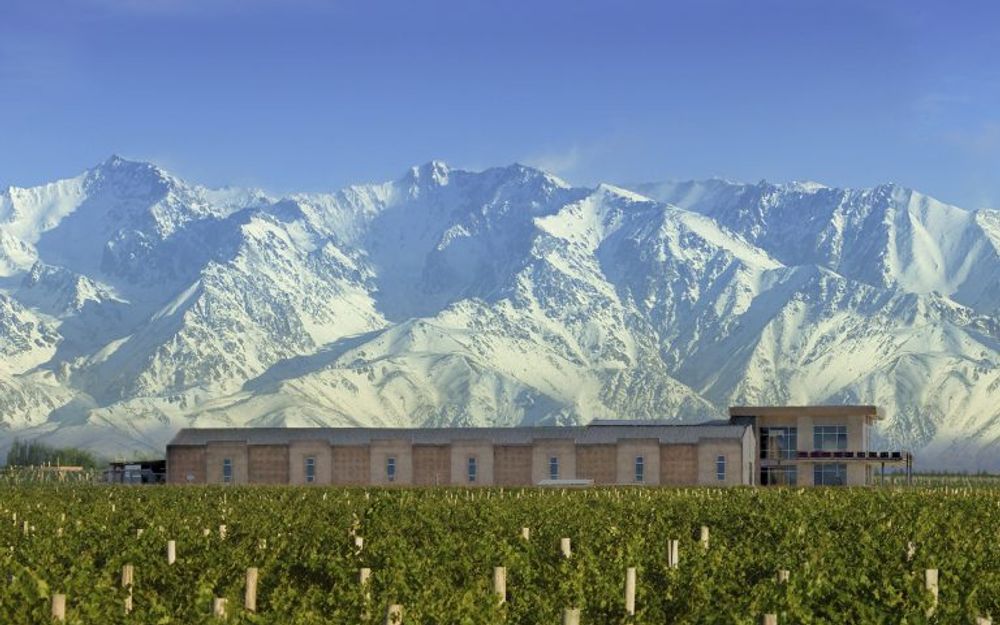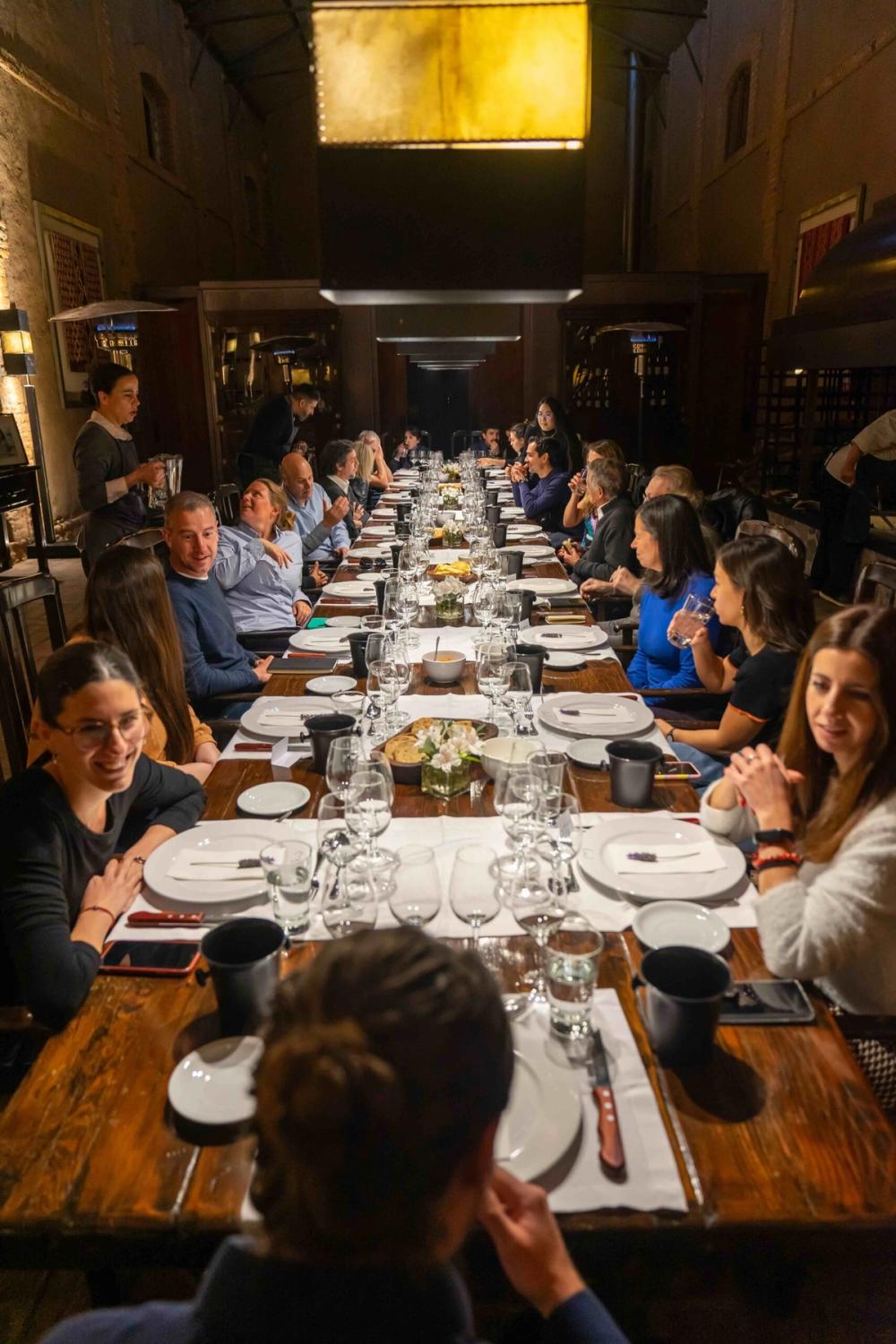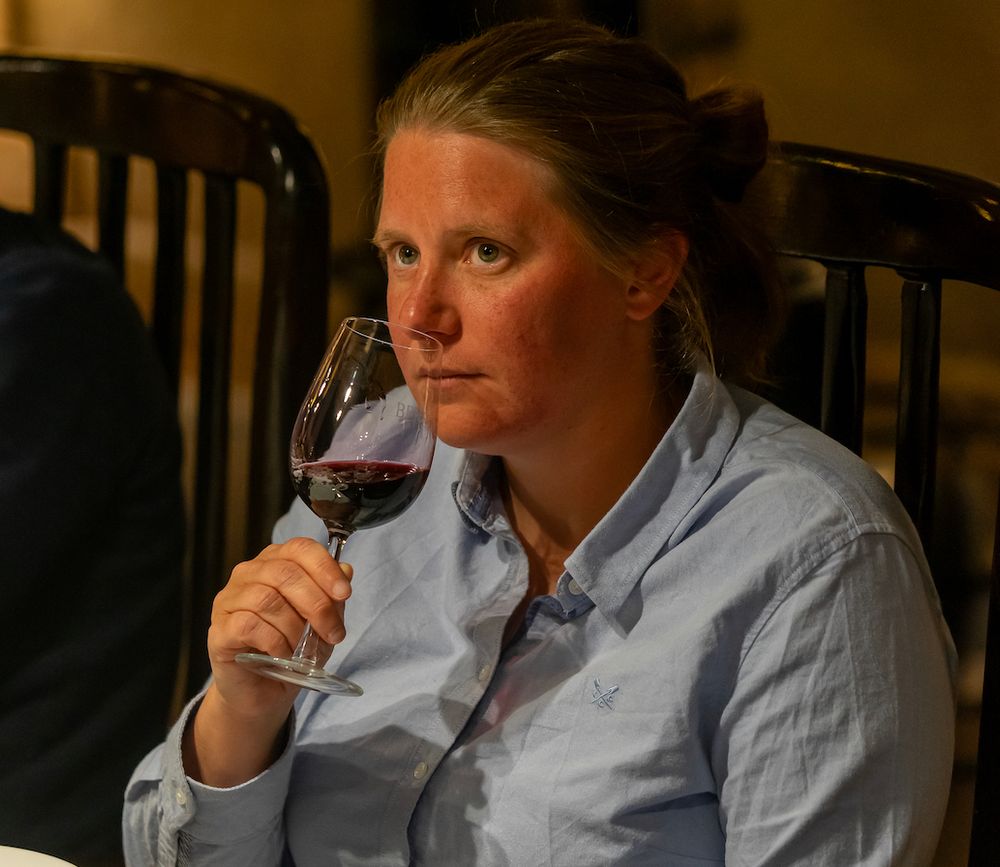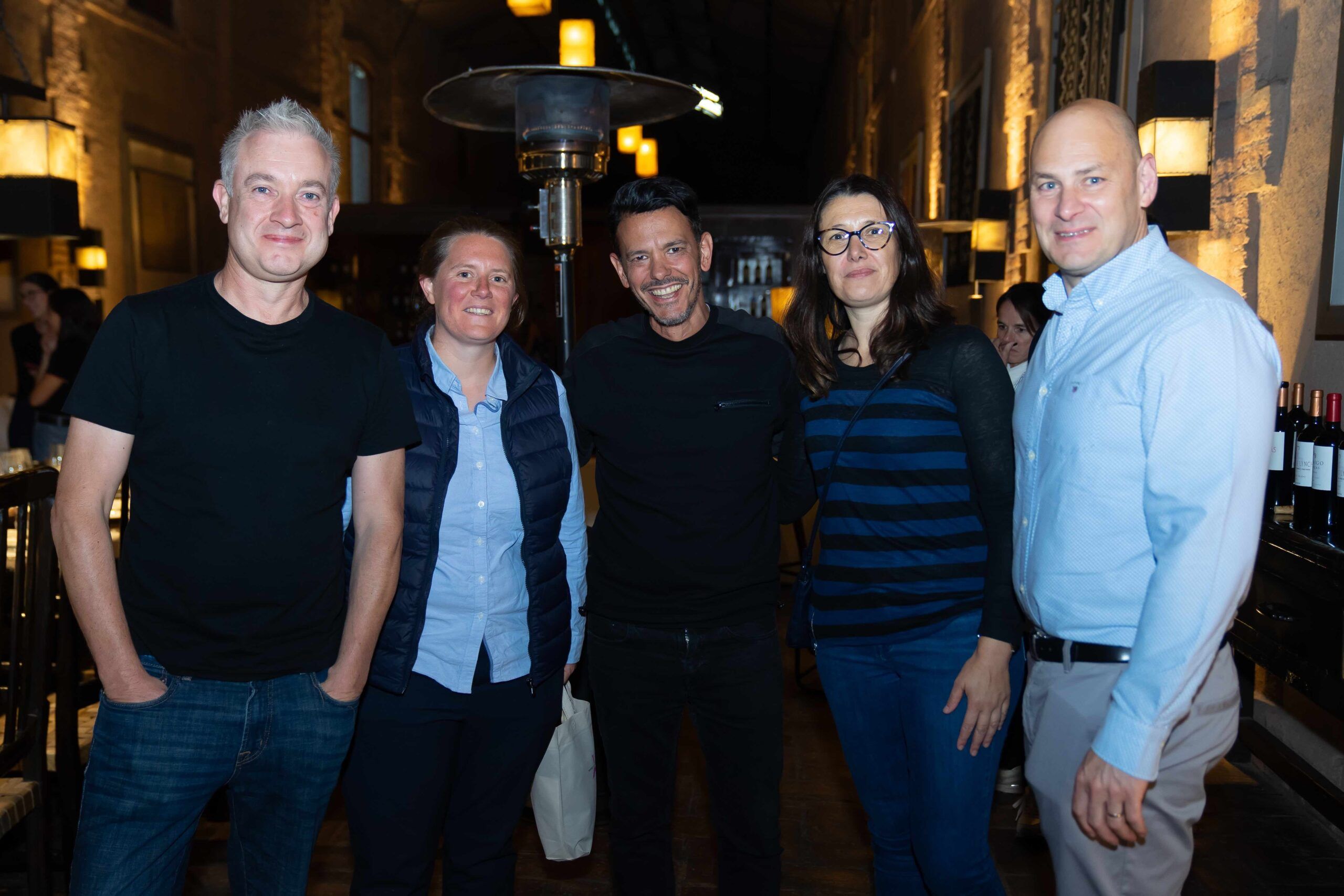This was the first time the IWSC had taken its judging process to Argentina and it was welcomed with open arms by producers keen to show the huge changes and advances in winemaking across the country.
Such is the astonishing impact of Malbec on the international stage that Argentina could be said to be a victim of its own success: a grape adopted from France is now the country’s calling card, its dominance posing a challenge for producers who warrant recognition for the other varieties making thrilling wines.

Ready for action: The IWSC judging panel headed to Mendoza to judge all the Argentine wines entered into the 2023 awards
As its vines have crept into the foothills of the Andes, Argentina’s reputation has also followed an upward trajectory, courtesy of a shrewd focus on quality over quantity (its total area under vine has actually reduced slightly from 222,000 hectares in 2017, to 211,000 in 2021, according to the OIV) as evidenced by the results from the International Wine and Spirit Competition this year.
In early July, in partnership with Wines of Argentina, the IWSC took a team of judges to the country, for the first time – part of a strategy by its trailblazing chief executive, Christelle Guibert, to bring the process to major countries and regions for ‘in situ’ judging. Based at Mendoza’s Diplomatic Hotel, four panels, each comprising international judges teamed up with South America-based experts were overseen by Dirceu Vianna Junior, Brazil’s first Master of Wine and a leading member of the IWSC’s senior judging committee.
On the visiting team, alongside myself: Matteo Montone MS, group wine director for Gleneagles Hotels and Estelle group, Beth Pearce MW, buying director at Lay and Wheeler, Rebecca Palmer, associate director at Corney & Barrow, and Cristie Norman, lead sommelier at Wynn Las Vegas.

Domaine Bousquet was the most successful producer in the IWSC Argentine awards with three gold medals
In all, 444 medals were awarded to Argentinian wines, with 11 golds, an impressive haul of 150 silvers and over 270 bronzes. Among the top medals, Domaine Bousquet was the most successful individual winery, winning a trio of golds – for its Ameri Single Vineyard Organic Red Blend 2020, Gran Bousquet Organic Malbec 2021 and Finca Lalande Organic Malbec 2022 – no doubt a factor in Domaine Bousquet going on to win Red Wine Producer of the Year at the IWSC awards gala last month.
Praising all those awarded medals, Vianna Junior pointed to the high number of silvers, a reflection, he said, of the consistent quality of Argentina’s wines: “This competition has very high standards, so for a producer to win a silver medal is a great achievement and the number of silvers awarded was higher than average, so Argentina is doing a great job.”
Malbec’s moment
Predictably for a grape that accounts for 65% of the country’s exported wine, Malbec led the medal table, scooping six of the 11 golds awarded, with the variety also featuring in the three blends that won the top medals.
Montone said an evolution in style was very apparent in the medal winning Malbec wines: “I was very impressed overall. The most awarded wines were where the vineyards were planted at high altitude, with the variety offering density, concentration and power, with vibrancy and freshness. What I have been tasting is not what I tasted 10 years ago (as) people are moving away from super rich, oaky wines to a much more refined style.”

The judging panel of UK wine buyers also had the chance to visit producers and experience Argentine life, food and culture during the trip
From his perspective leading the process, Vianna Junior also applauded the change: “There’s the old-school Malbec, a bit oaked with good ripeness – it’s still a traditional style. But in general, there is a move towards freshness and I think it’s a good thing. However, it’s important that both styles co-exist. There is a future for Malbec, obviously (as a varietal wine), particularly with terroir-specific wines, but I think the future is actually Malbec-based blends.”
For her part, Rebecca Palmer offered particular praise for the range of site-specific Malbec wines assessed: “In the best wines, there’s a real north, south, east, west. I think there is a dialling back, to a fresher style, letting the perfume sing and with that freshness comes more precision in terms of site specificity.”
Moving beyond Malbec
Beyond the gold medal winning Malbec and blends featuring the variety, there were two other gold medals: for Cabernet Franc and Chardonnay respectively –a sure sign of where Argentina’s future success lies, beyond its dominant grape.
Referencing the other varieties that shone in the judging process, including Chardonnay, Torrentés, Cabernet Franc, Pinot Noir and Garnacha, Vianna Junior said Argentina was evidently destined for further success: “There are so many layers which are yet to be discovered by the consumer and Argentina is in a really good place.”
Though only the third most planted white grape in Argentina, behind the workhorse Pedro Giménez (not to be confused with the Spanish Pedro Ximenez), and the aromatic Torrentés Riojano, Chardonnay now accounts for around 6,000 hectares of vines and is already punching above its weight.

The judging panels included wine professionals from across South America as well as those that came in from other parts of the world, including the UK
“There’s a huge opportunity here, where the Burgundy category has shifted so much in terms of price point,” says Palmer, “the absolute quality I found in the wines we tasted was really outstanding: they have a gravitas that certain other key regions producing Chardonnay around the world do not quite have, there’s a polish and a self assurance, without being overblown.”
Cabernet Franc is one of the few varieties to have increased in hectares planted in the country, growing by 115% in a decade, to its current figure of 1,569 hectares (still a minnow versus Malbec at 45 thousand) with the variety developing its own distinctive signature in Argentina’s altitude regions such as the Uco Valley.
“I thought the Cabernet Franc we judged was outstanding and if Argentina can do with Cabernet Franc what it has done with Malbec then there’s no stopping it,” adds Palmer.
The way ahead

Lay & Wheeler’s Beth Pearce MW believes Argentina is at the “start of a journey in top quality” wines
For Vianna Junior, the judging sessions revealed a potential route map for Argentina’s wine industry: “A lot of people just think of Argentina as Malbec but there’s so much diversity in terms of regions that needs to be passed on through education. It takes time, it’s not rocket science, but it has to be done.”
Though Argentina’s wine industry undoubtedly faces some serious economic challenges, courtesy of its political landscape (the annual inflation rate is currently 135%), for its terroir, Beth Pearce echoed the optimism of her fellow judges on the country’s prospects based on the quality of what she had assessed: “From a fine wine perspective, I would like to see them really honing in on site and also ageing potential.The best wines have a great market opportunity, there are definitely competing on the world stage for wines produced at altitude.It really feels like Argentina is a start of a journey in top quality which makes it very exciting.”
- You can find all the medal winners in the IWSC Argentine awards here.
- You can read the other articles on The Buyer in the IWSC series following their other judging sessions around the world by clicking here.































